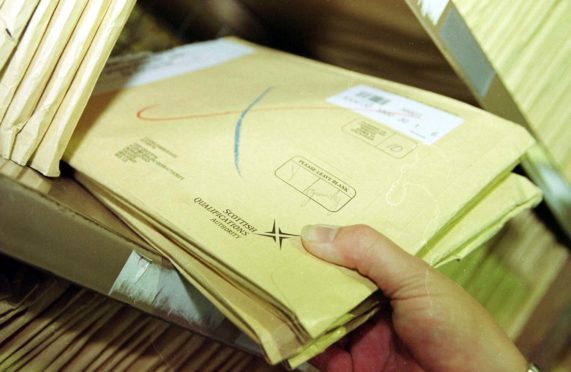A north PE teacher has been struck off the register for two years for doctoring pupils’ portfolios which were sent to the Scottish Qualifications Authority for marking.
John Murray admitted altering the work between March and April 2016 while employed by Highland Council at a secondary school in the area – but the name of the school has been anonymised.
A panel for the General Teaching Council for Scotland (GTCS) has found that Mr Murray breached the Code of Professionalism and Conduct and that his fitness to practice was impaired.
A report published online by the teaching profession’s watchdog states: “The panel considered these breaches to be serious.
“It was essential to the integrity of the examination system that the processes and procedures of the SQA are followed and that teachers act honestly at all times.”
The GTCS report states that an investigation started after concerns were raised by the Scottish Qualifications Authority (SQA).
The school’s depute head teacher said that Mr Murray told him the work submitted was done by the pupils. However, evidence was then presented to show the portfolios had been worked on by someone other than the pupils and Mr Murray conceded that he had “added to and changed” the submissions to the SQA.
The report also revealed that another teacher at the school said that Mr Murray, when asked, had originally sought to blame the pupils.
The report added: “The teacher had shown a complete lack of honesty and integrity in his dealing with the SQA. Further, when challenged, he sought to blame the pupils. The panel noted that it was only when presented with the evidence that the teacher accepted the conduct described in the allegation.”
The report went on to say that there was no evidence that Mr Murray had taken action to remedy his conduct and had shown “no insight or remorse.”
The GTCS panel decided to issue a consent order to Mr Murray, offering him the chance to agree to removal from the teaching register, which he did.
It was also noted in the GTCS report that Mr Murray applied for anonymity, referring to a doctor’s report suggesting his health might suffer if the decision to remove him from the register were to be made public.
But the panel concluded the medical evidence was insufficient to justify anonymising Mr Murray. Distress or embarassment was also stated as not being a good enough reason to anonymise in light of the public interest in the matter.
Highland Council was unable to provide a comment on the matter and an SQA spokesman said the body does not comment on individual cases.










